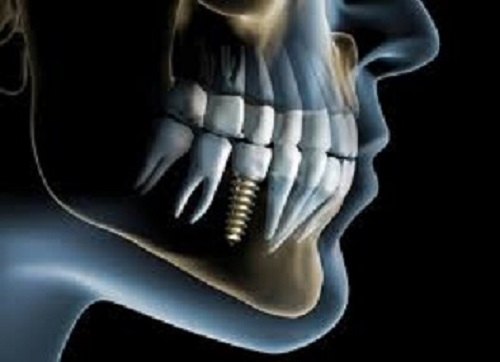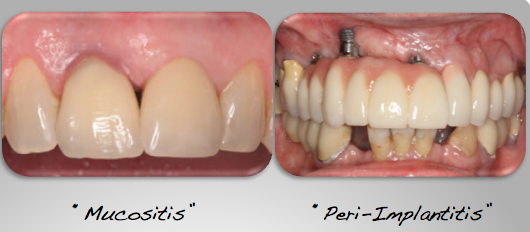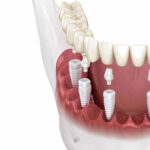Above two patients presenting to Dr. Anderson’s office for the initial implant disease evaluation. On the left, a moderate case of mucositis (#9) and on the right a severe case of peri-implantitis (#’s 4, 6, 9).
Although uncommon, dental implants can develop infections just like natural teeth. This infection can involve only the gingiva (gum) as with “mucositis” or extend to the bone as with “peri-implantitis”. As with natural teeth, implants can be lost due to advanced stages of the infection and may require replacement. Luckily, periodontal treatment is predictable and effective in the treatment of mucosistis and peri-implantitis. Periodontal researchers are now developing more sophisticated techniques that aim to restore the original condition of the implant. To learn more ask your periodontist!
How do I know if I have peri-implantitis?
There are several techniques a periodontist uses to determine if your implant is infected. He or she will look at radiographic bone loss, probing depths (check the gum pocket), bleeding, suppuration (pus) and mobility. Unfortunately, many patients do not experience signs or symptoms until the disease is advanced. Early diagnosis and treatment are paramount to maintain the implant in the best function and esthetic as possible. Contact your periodontist if you have an implant you suspect may be infected for the proper work-up and treatment if needed!






